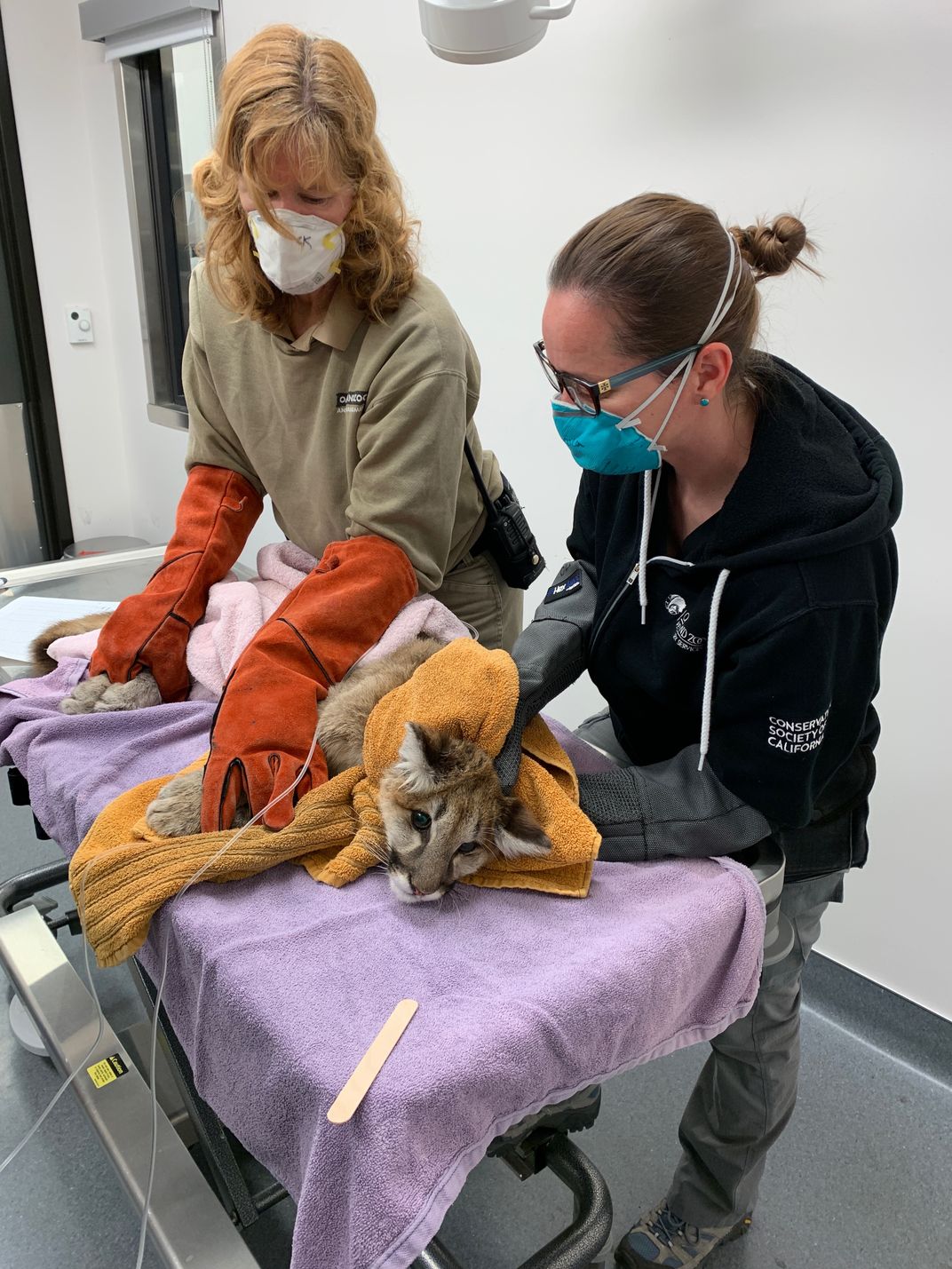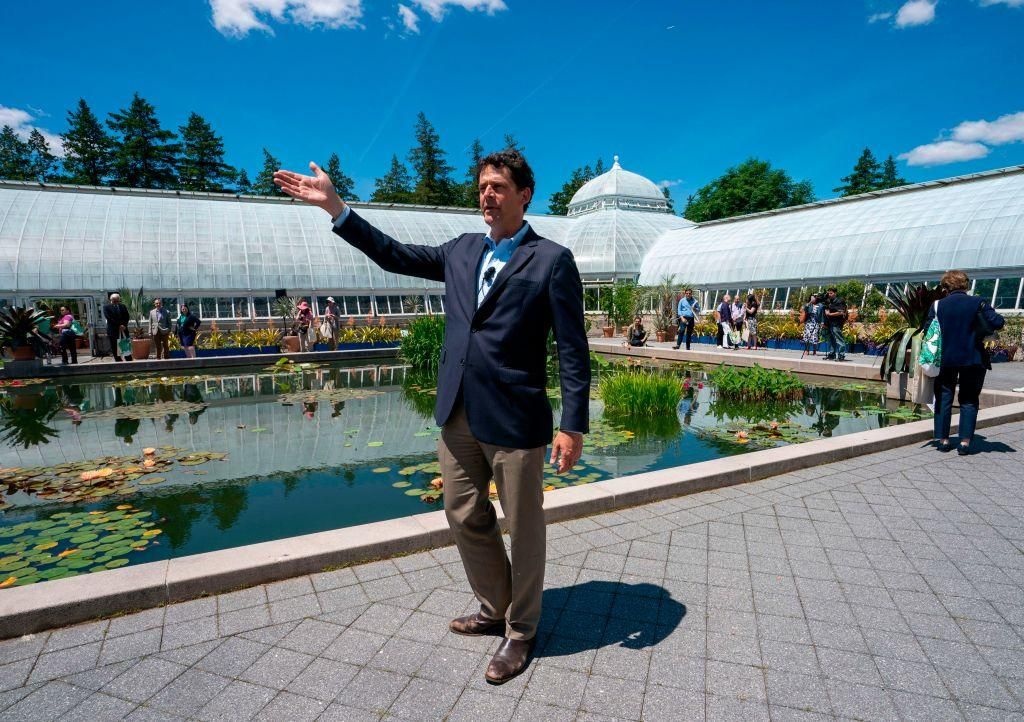A Behind-the-Scenes Look at Maintaining Tourist Sites During COVID-19
Despite closures, essential workers are the ones holding down the fort at these popular travel destinations
/https://tf-cmsv2-smithsonianmag-media.s3.amazonaws.com/filer/58/59/5859bfff-d3c1-4645-8763-4ce59d6e24de/shedd_aquarium-main.jpg)
Under normal circumstances, spring is the time when the country’s many zoos, aquariums and botanical gardens come alive with activity after a long, cold winter. However, this year has been anything but ordinary. Over the course of the last couple of months, the nation has watched as these popular travel destinations as well as museums and historical sites have closed to visitors in an attempt to help curb the spread of COVID-19. But while these attractions may have been (or in many states, still are) off limits to the general public, essential workers have been showing up daily to take care of animals, plants and artifacts amidst their closures.
However, it's not just the workers who are feeling the affects of the pandemic, but the animals, too. Zoos worldwide report that there have been noticeable shifts in the animals' behavior. In some cases, the animals are craving more human interaction, which they normally receive when these facilities are bustling with visitors. Giraffes at the Houston Zoo, for instance, are used to visitors feeding them lettuce, and the chimpanzees at the Maryland Zoo are normally hand fed but due to social distancing procedures are receiving scatter feedings instead.
Zookeepers, animal trainers, horticulturalist and other essential employees across the United States have had to maintain a sense of normalcy to keep things running smoothly behind-the-scenes. Whether that means working longer, more sporadic hours or taking on new duties, these caretakers’ roles have shifted in the wake of COVID-19, sometimes in interesting and creative ways.
These staff members have had the unique opportunity to witness changes at their places of work that are the immediate result of closures. Colleen Kinzley has been living onsite at the Oakland Zoo in California for nearly 25 years, but it’s only been in the past few weeks that she’s witnessed a shift in animal activity at what has been her home for much of her career. As vice president of animal care conservation and research, she’s responsible for leading a team of zookeepers in caring for the animals, particularly the zoo’s resident herd of three African elephants, whose quarters are within close proximity to her own. If one of the animals should need immediate assistance at night, either she or the other onsite manager springs to action. But because there haven’t been large crowds of people visiting the zoo, she’s noticed animals from the adjacent Joseph Knowland State Arboretum and Park, a nearly 500-acre green space, starting to roam the zoo.

“I walk to and from work each day, and lately I’ve been seeing more deer and turkey during that time,” Kinzley says. “I’ve seen a couple of deer strolling through the elephant exhibit. We also have some frogs living in the [Wayne and Gladys Valley Children’s Zoo] that are usually silent, but now they’re deafening. It’s been interesting seeing wildlife take over where people have left off.”
While Kinzley’s animal encounters are something that the public will not likely get to experience once the zoo reopens and the crowds return, at the Shedd Aquarium in Chicago, animal care staff have lifted the veil of what goes on behind-the-scenes by putting some of their resident animals in the limelight. In March, trainers filmed the aquarium’s colony of Rockhopper penguins as they went on a “field trip” through the building’s beluga whale exhibit. The video quickly went viral. However, one thing a lot of people may not realize is that these roughly 30-minute jaunts are a regular occurrence for the penguins once the crowds have left the building.
“Sometimes we’ll walk them into the offices upstairs, or during slower times we’ll take them through the exhibits when the building is less crowded,” says Steven Aibel, senior director of animal behavior and training. “We want our animals to be flexible and used to closed and open buildings. In the wild, animals are meant to be flexible and adaptive, so we’re parlaying that into their current environment by making things variable and each day new.”
Aibel says that the viral video’s international acclaim was a fluke and the result of one of the trainers who wanted to capture the moment to share with family, friends and colleagues.
“Little did we know that the world would be interested,” he says. “We thought it was cool and fun, and the experience shows the positive affect animals can have, especially right now when people are looking for hope these days.”
This hope is proving especially important as these essential employees are not only trying to keep operations running smoothly, but also striving to educate the public, which during normal times is a crucial part of their day-to-day work.
“The biggest change for us while we’re closed is that we’re not doing any public-facing programs,” Aibel says. “Normally, each morning we come in and prepare for ways to engage with guests by doing presentations, meet and greets, and animal encounters. These things are very purposeful to the welfare of the animals, since it gives them activities and stretches their brains. Because these exercises are no longer supplied through daily programming, we’ve had to figure out ways to still do these elements, such as taking them on walks through the aquarium.”
In institutions where there are no animals to care for, essential workers have had a little more leeway in how creative they can get while still engaging with audiences. At the National Cowboy and Western Heritage Museum in Oklahoma City, Tim Tiller, the museum’s head of security and resident cowboy, has become the unofficial social media spokesman for the museum. For the past couple of months, Tiller has been working with the marketing team by hijacking the museum’s Twitter feed (@ncwhm) with his viral #HashtagTheCowboy posts. In his tweets, Tiller highlights some of the high jinks he’s gotten into as one of the sole staff members on site, like modeling items sold in the gift shop and interacting with the exhibits, including a stint in the museum’s jail. He’s also been answering fans’ questions like, “How often did cowboys take a bath?” and “What’s the proper way to tie a wild rag or bandana?”
Thanks for the mug tips, folks. Checked the Brodkin gallery. Nothing. Whoever is behind this is very sneaky! You can telegraph me any more tips to Prosperity Junction. Or use our hashtag. Whichever is easier for you. #HashtagTheCowboy Thanks, Tim pic.twitter.com/W6RrI5hF72
— Nat'l Cowboy Museum (@ncwhm) May 22, 2020
“We were hoping to gain a few new audience members, but had no expectations that they would be from all over the world,” Tiller says. “People are telling us that the posts have helped them through their day, and thank us for the positivity during this tough time.”
Seth Spillman, the museum’s chief marketing officer, and his team are the ones responsible for recruiting Tiller in the first place.
“Tim is an authentic voice for our institution and has been a real sport with all of this,” he says. “We’re getting feedback from people from all over the world who have said that they’ve never been to our state and museum, but now they can’t wait to come and visit us when we reopen.”
Another popular tourist destination that has been finding new ways to engage with the public is the New York Botanical Garden in the Bronx. When it closed on March 15, the organization was quick to keep the garden's many fans actively involved by posting photos and videos of its popular Orchid Show, which was already in full bloom and, during normal circumstances, one of the first signs of spring for many New Yorkers. Over the years, the NYBG has served as a beacon of hope and popular respite for city dwellers.
“After 9/11, people enjoyed having access to the garden, since they saw it as a place that’s fundamentally peaceful and where they could bask in the benevolence of peace and beauty,” says Todd Forrest, the Arthur Ross Vice President for Horticulture and Living Collections at the NYBG. “People need that now more than ever, and it’s frustrating that we’re not able to provide that since we’re closed. We’re anxious for people to come back.”

However, there is some hope that, slowly but surely, things are beginning to go back to (more or less) normal at the gardens. Forrest says that during the first few weeks of its closure, only a small number of horticulturists were onsite, but every week more employees are returning to work to help out by watering and planting flowers, mowing the expansive lawns and transplanting plants in anticipation of summer’s first visitors.
“Right now the cherry trees, gardenias, and daffodils are all in bloom,” he says. “It’s stunningly beautiful, but haunting because the crowds aren’t here to enjoy it.”
Some day, perhaps sooner rather than later, these popular attractions will once again be alive with activity. But until then, at least we can find solace in knowing that these important destinations are right there, waiting for us to return.

